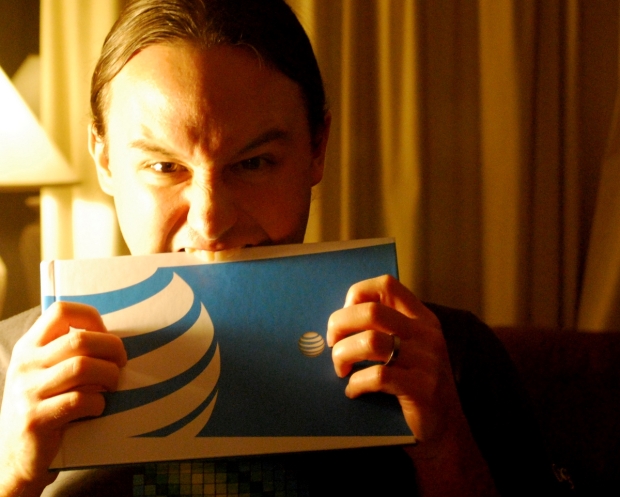Everyone at some time or another has worked on the service side of the business – trying to manage the client’s expectations while, many times, acquiescing to their demands, just to make them happy.
Smaller companies and start-ups, whose customers are everything to the business, cannot afford to leave any of their paying clients unhappy. But that does not mean being at the beck and call, or relenting to customer demands.
Working in the new media space, we find ourselves educating clients on the new best practices and the new way of marketing, many times to an audience akin to deer-in-headlights, who respond to our presentations with a hesitating nod and uncomfortable grin. They love the approach [or so they say]. They want to move ahead of their competitors and capitalize on opportunities, “So tell us what we need to do”, they say.
Customers buy from those they trust
Everyone goes through a decision-making process. They ask friends/family for recommendations. They go through the exercise of researching, comparing and contrasting prices and services detail. For B2B clients, they go through an RFP process, exhaustive meetings and legal due diligence and at the end of this process, they’re quite confident at the choice they’ve made.
The honeymoon period doesn’t last very long. The agency says all the right things. The client nods their head in agreement, excited to begin the process of developing this new program that has promise of reaping them amazing rewards!
Everything goes right until it goes wrong….
And that’s when the honeymoon ends.
When things go wrong, the customer is NEVER at fault
I recently read a post from my colleague, Amy Tobin, who had written a post for the restaurant industry. It’s here she stated:
The Customer is Always Right – one of the most cliched and repeated phrases in marketing. And frankly, I don’t believe it’s true. I know that in some circles it’s scandalous to say, but the reality is that, the customer is wrong, and ANYONE who has worked as a waitress or in the restaurant business probably knows this. There, running into an irate, expectant, obnoxious customer is part of the job… and understanding how to handle and diffuse the situation is also ‘part of that job.’
When things go wrong, someone needs to be blamed. The client will never take responsibility because they don’t have to. When a deliverable is late to market or when things go awry, this knee-jerk reaction to find the culprit always points the client in one direction: the onus is always on the agency to explain what has happened.
A friend, who founded a start-up explained this to me [paraphrased]:
An irate customer called me on the phone, and told me of a glitch in his system that caused some of the end-terminals to improperly process customer transactions. He indicated it was working perfectly before we had made changes to it. He asked us what we had done to cause the problem. I immediately apologized and said we’d look into it.
A few hours later, we realized that the customer, himself had changed a setting within the system that inadvertently defaulted the system to a prior setting. Since the code had been changed, the reset had resulted in the problem identified. When this was brought to the client’s attention, he remembered what he had done and apologized for the mishap. And all was well “again”.
So, we let bygones be bygones… but to the point of complete submission. All for the sake of protecting a revenue stream.
Are we all Yes-Men?
I read this post the other day from Entrepreneur, 30 Ways to Show Your Customers They’re Always Right: This primer on customer service will leave your clients happy and your business booming.
One particular area angered me. It read,
- “I will take responsibility.” Tell your customer you realize it’s your responsibility to ensure a satisfactory outcome to the transaction…
- “I will deliver on time.” A due date that has been agreed upon is a promise that must be kept. “Close” doesn’t count.
- “Monday means Monday.” The first week in July means the first week in July, even though it contains a national holiday. Your clients are waiting to hear you say “I deliver on time.” The supplier who consistently does so is a rarity and will be remembered.
- “It’ll be just what you ordered.” It will not be “similar to,” and it will not be “better than” what was ordered. It will be exactly what was ordered. Even if you believe a substitute would be in the client’s best interests, that’s a topic for discussion, not something you decide on your own.
What follows is something more horrific, in my opinion:
Neglecting any of these steps conveys the impression that you were interested in the person only until the sale was made. This leaves the buyer feeling deceived and used, and creates ill will and negative advertising for your company.
Now, I’m not advocating for any company not to make those promises to clients. In potentially 80% of the cases, if all goes according to plan, an agency can deliver all those things. However, the reality is things will happen. Directions change in the process; strategies are diverted; decisions get delayed. And yes, many times, miscommunication can lead the agency to make unfortunate errors. But 100% of the time the blame cannot lie solely on the shoulders of the vendor.
When the agency has to come, yet again, to explain the mishap, they must do so without somehow alluding to some client-side mishap that led to the eventual outcome. This is a perpetual state of disrepute that many agencies find themselves in.
A friend, Sean McGinnis, recently shared a post that made me aware of one such situation that made me applaud, Chicago ad agency fires client Panera, calling company ‘difficult’.
CEO says Panera was a difficult client and “in the end, no amount of money makes it worthwhile”….
The memo cites “the constant last-minute shifts in direction, the behind-the-scenes politics, the enormous level of subjectivity that disregards proof of performance — all churn people at a rate that becomes much too much even in this crazy business.”
The “environment of inconsistency” at Panera Bread apparently drove the decision to walk away from a major client.
“That’s hard to do in this increasingly low-margin, high-churn business,” Krivkovich said. “Most agencies just suck it up and take it.”
The ultimate relationship comes back to trust
In my later years, I’ve become so much different than when I was a young account executive for a large Ad Agency. Back then we were trained to properly manage the client expectations. We needed to be one step ahead of the client at all times. If you’ve worked in agency, all contact reports, follow-up emails were necessary, all for the purpose of CYA documentation {ie Cover your Ass} and limiting agency liability.
However, I’ve also come to believe that clients come to you because of your expertise. You have something that no other agency has. People who hold the purse strings can easily blame the vendor because they have nothing to lose.
What changes the dynamics in the relationship between the client and the agency is a true understanding of the value that the chosen agency brings. Many times clients, who think they know better, will make decisions they feel are best for the business and decide to go in a different direction than what has been recommended.
While this may be true, clients may also feel pressured to perform and they can easily fall back into the tried-and-true. And many times this isn’t communicated.
The need for transparency between the customer and the agency
Where many of my relationships with clients have come to a head, we begin to have transparent discussions about the client’s anxieties, investor expectations, management pressures. When that happens, it opens the doors to having full context into their world, and what they are up against on a daily basis.
That’s the opportune time to have the conversation that addresses each of those issues – one by one – and giving the client a new-found confidence that you’re there to do everything in your power to give them the result possible. But it means a quid-pro-quo:
- Identify the issues when they happen. This allows both sides to give each other the heads up before situations get worse. For better or worse, the investment in this relationship means that both sides need to work together to produce a better outcome.
- Educate the client. In many cases, the best way to get a program approved is to take the client through a learning curve and teach them what you know. They, in turn, will advocate the program internally.
- Insider scoop. Until there is trust between customer and agency, will the former keep the agency at bay. But once this has been built, it’s incumbent upon the customer to provide as much ‘necessary’ information to help he agency succeed. This has happened in our favour countless times, and we were able to over-deliver on client expectations time and time again. In the end, the client looks like a hero internally.
In the end is a true understanding that doesn’t leave two parties on opposite sides of a fence. In the end, the customer does not feel the need to continuously test the agency. In the end this ‘relationship’ puts both on an equal playing field that allows each to do their job without feeling the anxiety or mistrust that befalls many of the client/agency relationships today.
Photo source: Flicker: Beltzner
This article was originally posted on Steamfeed




